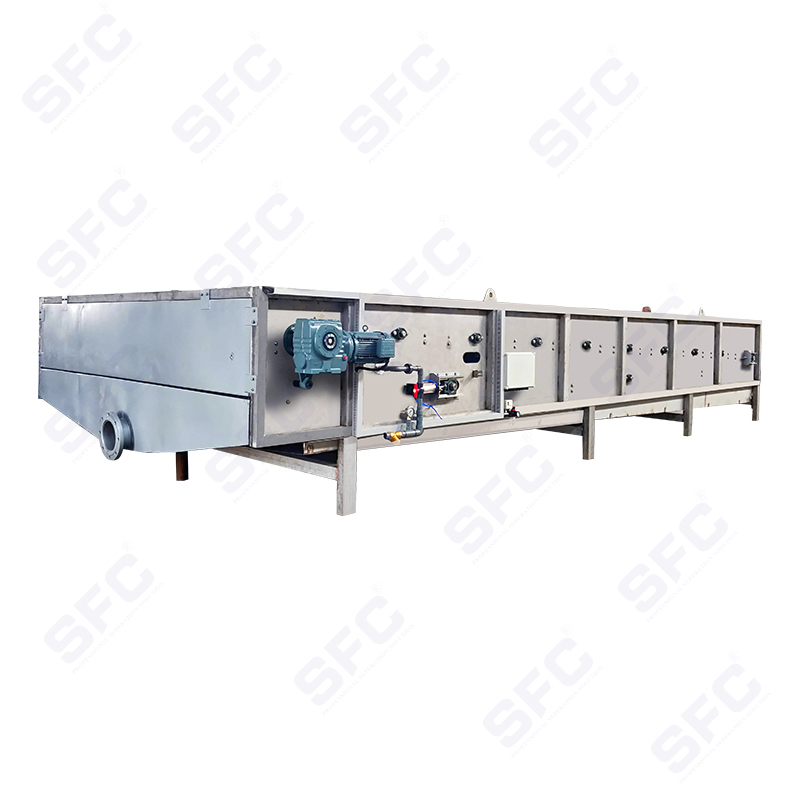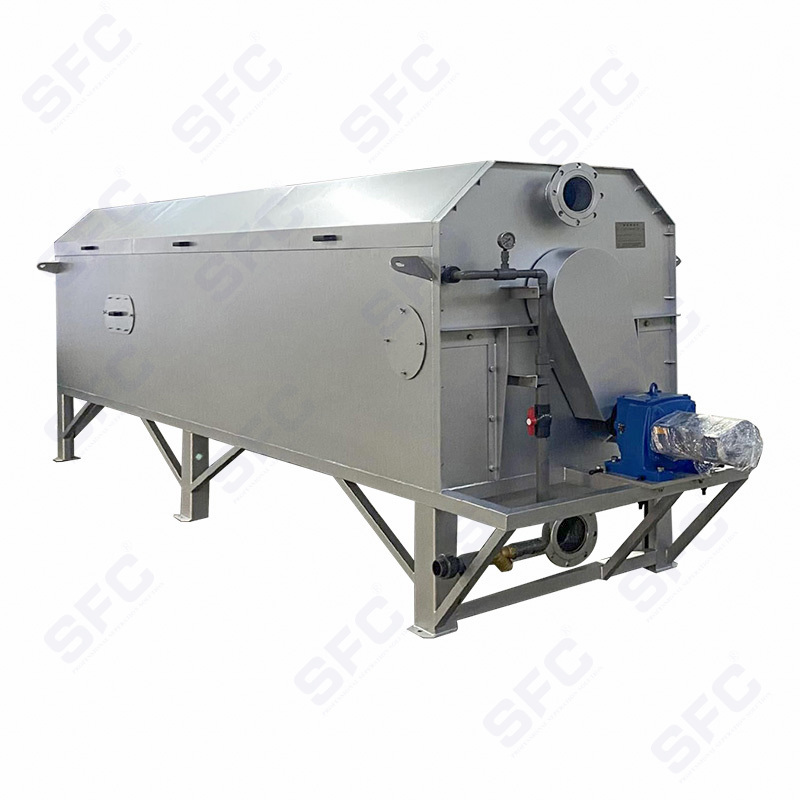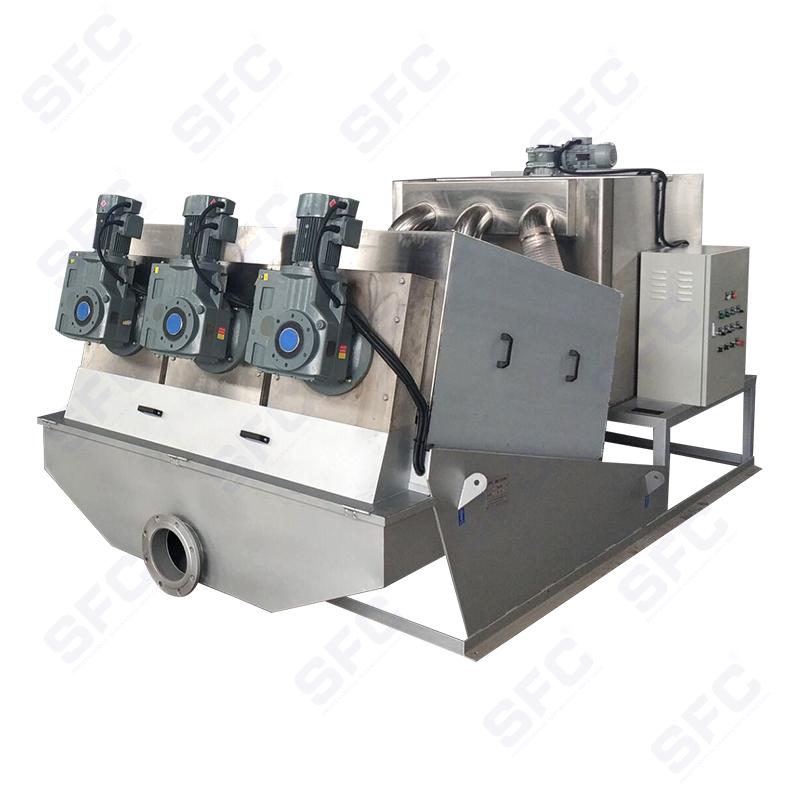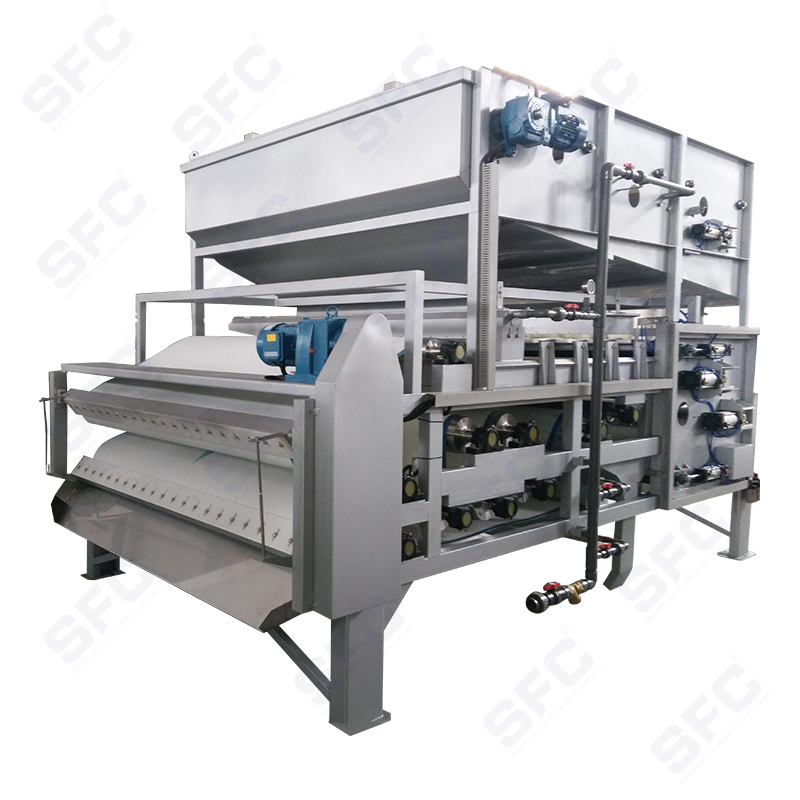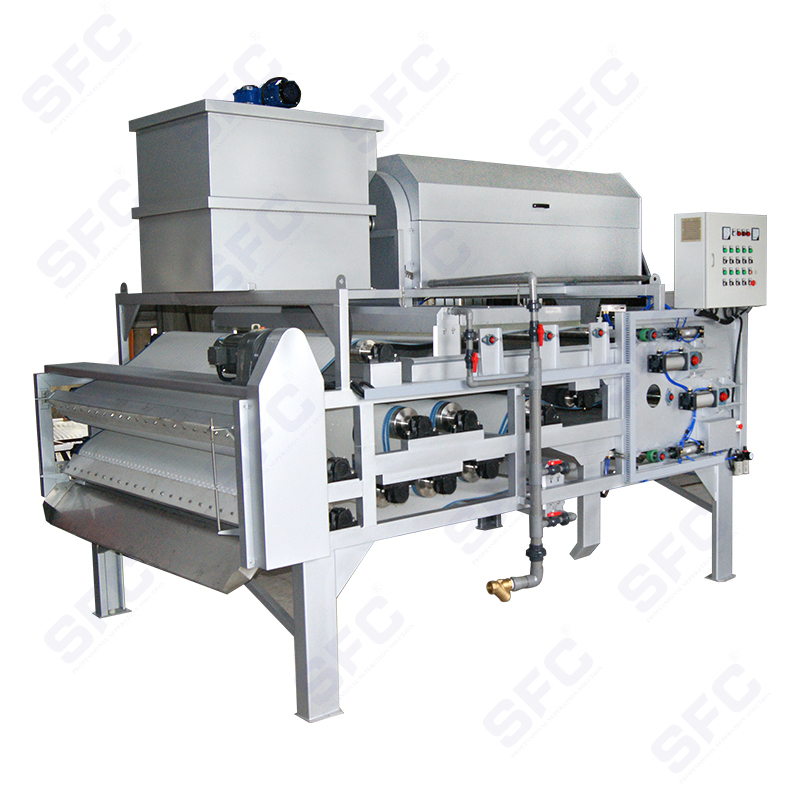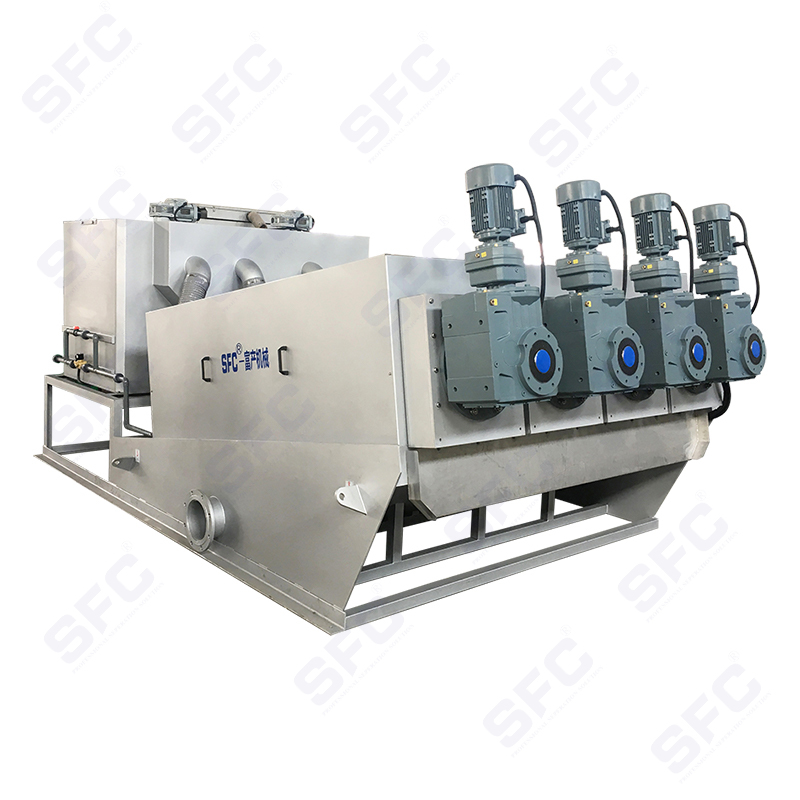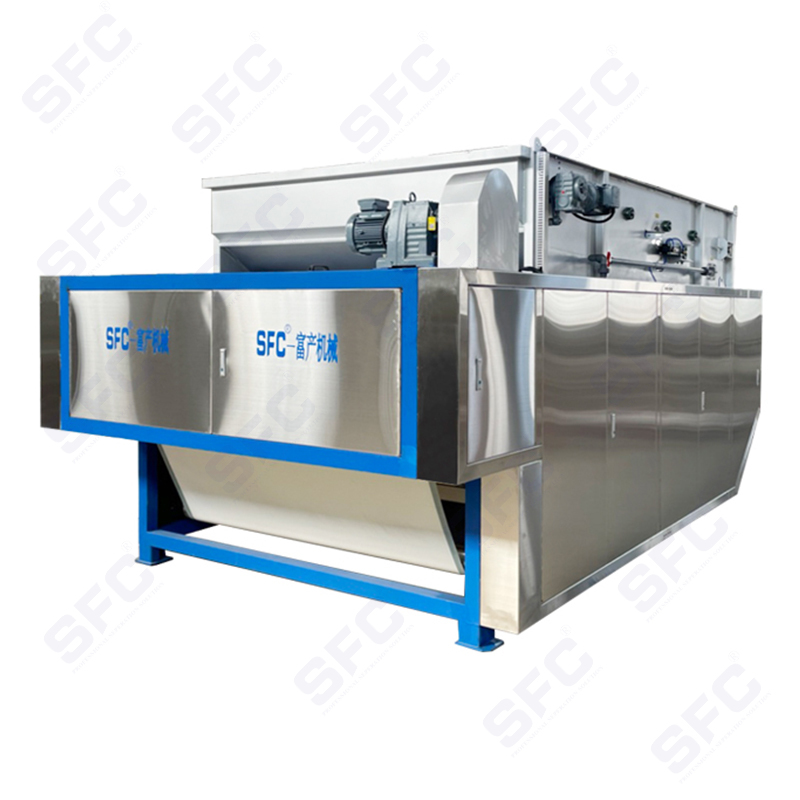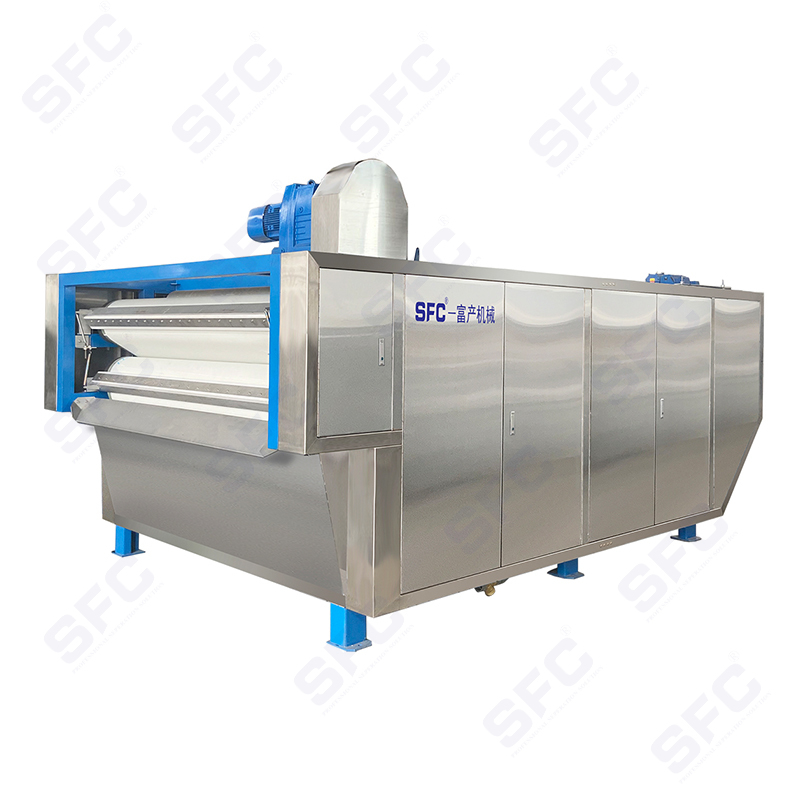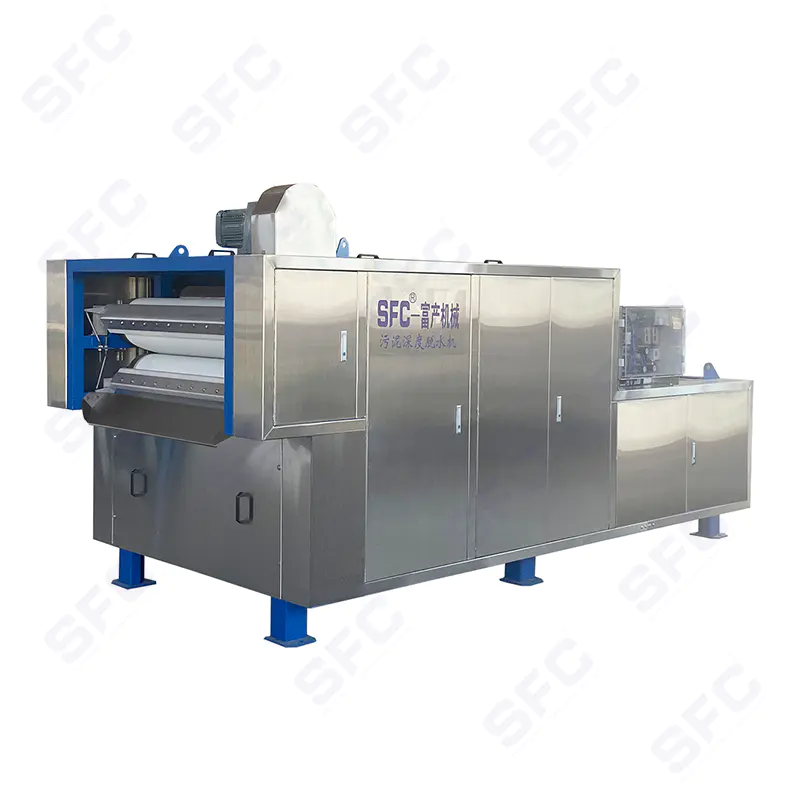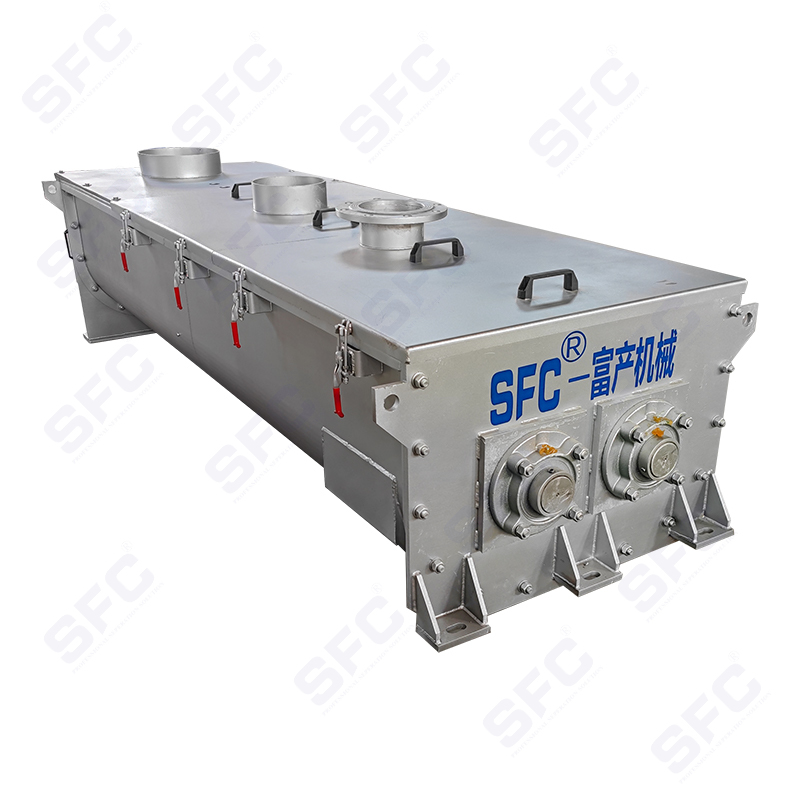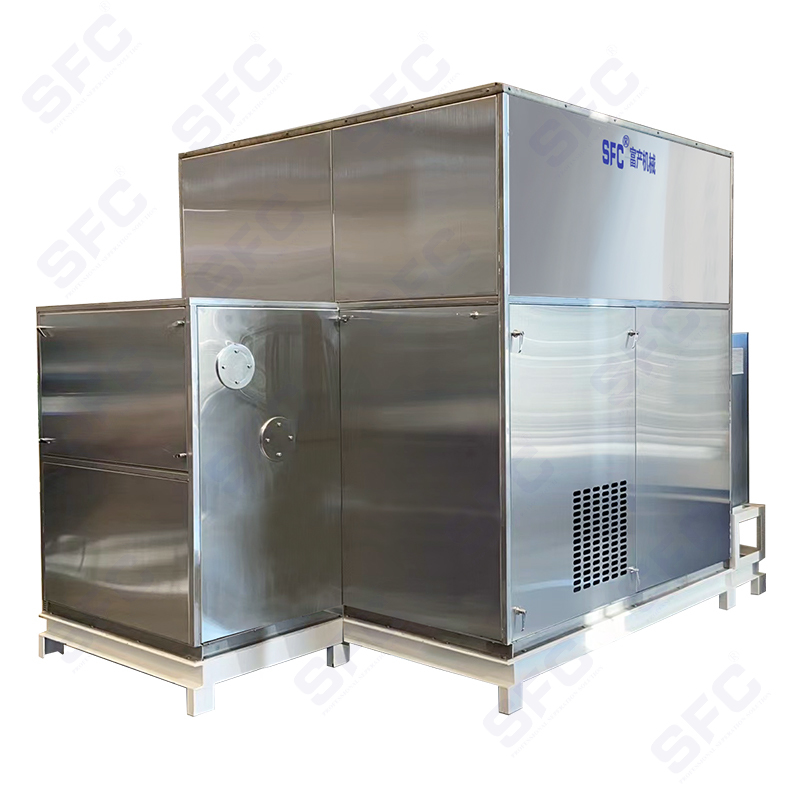What Are the Key Maintenance Requirements for Rotary Drum Dewatering Equipment?
In the field of modern wastewater treatment, Rotary Drum Sludge Dewatering Machines (also known as rotary drum thickeners or dewatering presses) are widely used for efficient sludge volume reduction. Their compact structure, low energy consumption, and automated operation make them a popular choice for both municipal and industrial wastewater plants. However, like any mechanical equipment, the long-term efficiency and reliability of a rotary drum dewatering machine depend heavily on proper maintenance.
1. Regular Drum Inspection and Cleaning
At the heart of the machine is the rotating drum, typically made of stainless steel mesh or perforated material. It serves as the primary medium through which water is filtered and sludge is retained.
Maintenance tips:
Inspect the drum mesh weekly for clogging, wear, or corrosion.
Use high-pressure water jets or an automatic cleaning system (if equipped) to remove accumulated solids and prevent blinding.
If the mesh becomes damaged, replace it promptly to maintain dewatering efficiency.
Neglecting drum maintenance can lead to ineffective filtration, increased sludge moisture content, and reduced system throughput.
2. Cleaning Nozzles and Spray System
Most rotary drum dewatering machines include a spray nozzle system that continuously cleans the drum surface during operation.
Maintenance requirements:
Check spray nozzles daily or weekly for clogging caused by lime, sludge particles, or hard water deposits.
Remove and soak nozzles in diluted acid or descaling solution as needed.
Ensure uniform spray pressure and distribution across the drum surface.
Blocked nozzles can lead to uneven cleaning, which affects the filtration rate and increases mechanical stress on the drum.
3. Monitoring Drum Rotation and Motor Health
The drum is rotated by an electric motor and drive system, often with a gear reducer.
Best practices:
Monitor motor load, vibration, and temperature using the control panel or sensors.
Check alignment and tension of any chain, belt, or coupling systems.
Lubricate gear reducers and bearings according to manufacturer guidelines (usually every 3 to 6 months).
Unusual noise, overheating, or jerky movement may indicate a failing bearing or misaligned component that needs immediate attention.
4. Lubrication of Moving Parts
Rotary drum equipment includes several moving parts such as rollers, bearings, shafts, and screw conveyors (if integrated).
Lubrication routine:
Use grease or oil types specified by the manufacturer.
Set up a monthly or quarterly lubrication schedule.
Wipe away any excess grease that may attract dust or solids.
Lack of lubrication is a common cause of premature mechanical failure in sludge dewatering equipment.
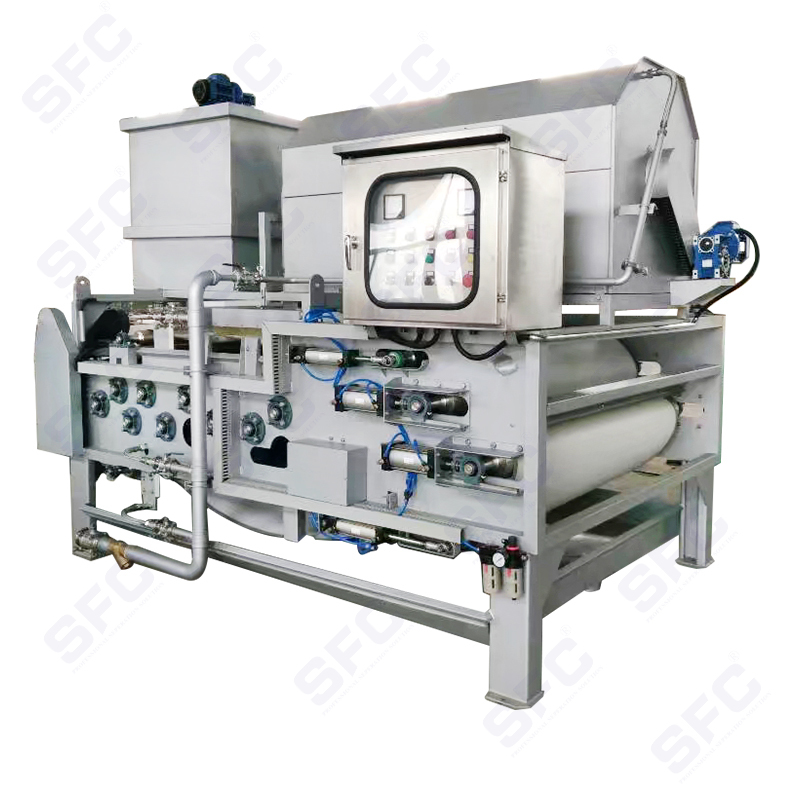
5. Inspection of Sludge Feed and Outlet Ports
Efficient operation depends on consistent sludge feeding and effective discharge of dewatered solids.
Maintenance includes:
Checking feed pump calibration and ensuring the sludge flow rate is stable.
Inspecting feed lines for clogs, air locks, or leaks.
Cleaning discharge ports regularly to prevent blockage or backflow.
Inconsistent feeding can lead to overloading, while blocked discharge ports can cause system shutdowns.
6. Flocculant Preparation and Dosing System Maintenance
Rotary drum dewatering machines typically rely on polymer flocculants to condition the sludge before dewatering.
Key points:
Clean the polymer preparation tank and mixer blades regularly.
Check for clogging in dosing pumps, hoses, and valves.
Calibrate the dosing system to ensure proper chemical use (overdosing increases cost; underdosing reduces efficiency).
A malfunctioning polymer system often leads to poor sludge capture, lower dry solid content, and higher filtrate turbidity.
7. Monitor System Parameters via Control Panel
Most modern rotary drum systems are equipped with automated control systems and alarms.
Daily checks:
Review parameters such as drum speed, flow rate, feed concentration, and outlet dryness.
Respond quickly to alarm messages (e.g., overload, belt slippage, or low water pressure).
Back up operational settings in case of system reset or power failure.
Digital monitoring improves preventive maintenance and reduces the risk of unexpected downtime.
8. Schedule Periodic Overhauls and Wear Part Replacement
Some components of the rotary drum system are subject to wear and should be replaced periodically, including:
Drum mesh
Scraper blades
Seals and gaskets
Drive belts or chains
Bearings and shafts
Recommended intervals for major servicing vary by manufacturer but typically range from 12 to 24 months. Always keep a spare parts inventory for critical components.
9. Ensure Safe Operation and Emergency Readiness
Safety is critical, especially in high-moisture, potentially corrosive environments like sludge treatment areas.
Safety tips:
Ensure emergency stop buttons and interlocks function properly.
Provide operators with PPE (personal protective equipment).
Post safety signage around rotating parts and high-pressure systems.
Routine safety audits help prevent injuries, spills, and equipment damage.
10. Environmental and Waste Management Considerations
Proper disposal and cleaning practices contribute to both performance and environmental compliance.
Suggestions:
Collect and treat cleaning effluent (from spray system) to avoid contaminating the environment.
Dispose of worn filter elements or flocculant containers according to local regulations.
Monitor odor control measures to ensure they’re effective, especially for sludge with high organic content.
Conclusion: Consistent Care for Consistent Results
A Rotary Drum Sludge Dewatering Machine is a critical component in modern sludge treatment systems — but only when it’s maintained correctly. By implementing a structured maintenance plan, operators can:
Maximize dewatering efficiency
Prevent unexpected breakdowns
Prolong equipment lifespan
Ensure compliance with environmental and safety standards
Whether you're a plant operator, facility manager, or equipment supplier, understanding these key maintenance requirements is essential for reliable sludge treatment operations.



 English
English Español
Español
